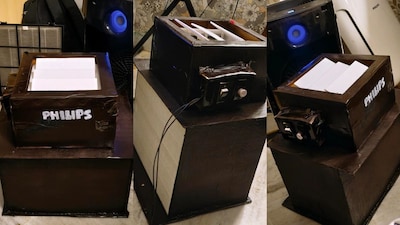Key Takeaways
- Delhi man builds effective air purifier for just ₹2,000
- Reduces AQI from 400 to 50 in just 15 minutes
- Uses simple components: exhaust fan, HEPA filter, and cardboard
- Commercial equivalent costs ₹15,000-25,000
A Delhi resident has created a homemade air purifier that dramatically improves indoor air quality at a fraction of commercial costs. With Delhi’s air quality frequently crossing hazardous levels, this innovation offers an affordable solution for many households.
The Viral Innovation
Reddit user u/Shukrant25 shared his creation online, demonstrating how his ₹2,000 purifier reduced AQI from 350-400 to just 50 within 15 minutes. “I built my personal air purifier in Rs 2,000… and it is working great, even better than the Phillips one I have,” he wrote in his viral post that attracted thousands of engagements.
How It’s Made
The DIY purifier uses simple, easily available components:
- 150mm exhaust fan (₹750)
- HEPA filter from Amazon (₹1,000)
- Cardboard and glue gun (₹150)
- Wiring, switch, and regulator (₹65)
Despite its modest appearance resembling a school project, the device effectively cleans air in a 12×12 ft room. Commercial purifiers with similar performance typically cost between ₹15,000 and ₹25,000.
Public Reaction
Social media users celebrated the invention as “Delhi’s desi innovation” and compared Shukrant to “India’s Elon Musk.” Many requested video tutorials and workshops, while others expressed interest in purchasing ready-made units. One commenter noted: “Air purifiers aren’t exactly rocket science… they’re just a simple IN and OUT air flow through filters.”
How Air Purifiers Work
Air purifiers operate through a straightforward process: drawing contaminated air through multiple filter layers to trap harmful particles. Standard systems include:
- Pre-filter for larger particles like dust and hair
- HEPA filter removing 99.97% of fine particles including PM2.5 and PM10
- Activated carbon filter for odors and gases
Purification time varies from 30 minutes to an hour depending on room size and the device’s Clean Air Delivery Rate (CADR).






